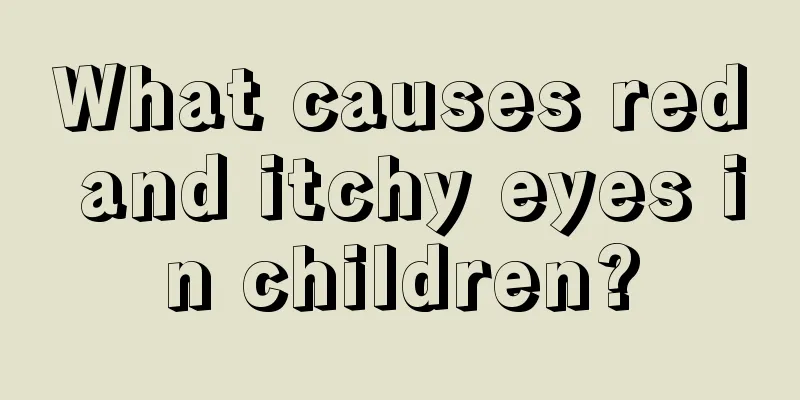What to do if your child has stomatitis

|
Children’s health is always a concern for their parents, but children are more susceptible to illness due to their low body resistance. Among these common diseases is stomatitis in children. Faced with a common disease like stomatitis in young children, what should parents do? This is something many parents, especially new parents, like to know. To this end, let us understand what to do if a child has stomatitis so that the baby can recover as soon as possible. Infants and young children have low immunity and poor barrier function of their skin and mucous membranes. They often become ill due to erosion and damage of the oral mucosa due to infection, trauma or other factors. Pediatric stomatitis is more common in infants and young children. It can occur alone or as a secondary result of systemic diseases such as diarrhea, malnutrition, acute infection, long-term illness, and physical weakness. There are three main types: thrush: Also known as snow mouth, it is a fungal stomatitis caused by Candida albicans infection. This disease is related to birth canal infection or nipple infection in newborns. In addition, dysbiosis is also an important cause (such as long-term abuse of antibiotics). The main symptom is the appearance of white curd-like substances on the child's oral mucosa, which may occur in one or more places at the same time. These white films can occur anywhere in the oral cavity, most commonly on the inner side of the upper and lower lips, buccal mucosa, tongue, gums, soft and hard palate, and sometimes also spread to the pharynx. It starts out as milky white dots or small flakes, gradually merging into large milky white membranes that are slightly raised and have no red edges. It is not easy to wipe off. If it is wiped forcefully, the area will become red and may bleed. Generally there are no systemic symptoms. In severe cases, symptoms such as loss of appetite, refusal to feed, crying and restlessness, low fever, and difficulty breathing may occur. Home care tips: 1. Generally, use 2% sodium bicarbonate solution to clean the mouth, 2 to 3 times a day. 2. When the area is large, you can apply 100,000 units of nystatin plus 1-2 ml of water to the affected area 3 times a day. It usually heals in 3-4 days. 3. When children are sick, antibiotics should be used regularly to reduce the occurrence of this disease. 4. Severely ill children whose white film spreads to the larynx, trachea, esophagus and even blood must be sent to the hospital for treatment in time. Herpetic stomatitis: It is an acute infection caused by herpes simplex virus type 1, and infants and young children aged 6 months to 2 years are most susceptible. At the onset of the disease, the patient may have a fever of 38℃ to 40℃. After 1 to 2 days, small blisters will appear on the oral mucosa, either alone or in clusters. After the small blisters rupture, very shallow ulcers are formed, with yellow-white membrane-like exudate on the surface and a red halo around it. Children often experience local pain accompanied by drooling, irritability, crying, refusing to eat, and spitting up milk. This disease can occur throughout the year, with peak epidemics in winter and spring. It is contagious and can break out in groups in childcare institutions. If left untreated, the disease will heal on its own after 1 to 2 weeks, but it is easy to relapse. Recurrent attacks are usually related to a deficiency of the trace element zinc. Home care tips: 1. In the acute phase, treatment is mostly symptomatic, such as reducing fever and calming the nerves. Topical treatment may include Herpes Cleanser (grinded into powder and applied) or the traditional Chinese medicine Xilei Powder. 2. Keep the mouth clean, drink water frequently, and eat liquid or semi-liquid food to reduce irritation. 3. Supplementation of trace element zinc can help prevent recurrence. Bacterial Stomatitis: It often occurs in cases of acute infection, long-term diarrhea, reduced resistance, or unclean oral cavity. It can occur anywhere in the oral mucosa, most commonly on the tongue, inside the lips, and cheek mucosa. Initially, the mucosa becomes congested and edematous, followed by erosions or ulcers of varying sizes, covered with a thick grayish-white pseudomembrane that is easy to wipe off. Bleeding can be seen on the wound after wiping. Systemic reactions are related to the severity of infection. Home care tips: 1. If the infection is severe, the symptoms are obvious, and the stomatitis covers a large area, you should see a doctor as soon as possible and receive intravenous or intramuscular antibiotics. 2. You can apply chloramphenicol glycerin, the traditional Chinese medicine Yangyin Shengji powder, and 2% lidocaine locally for pain relief. 3. Strengthen oral care and symptomatic treatment. The above is an introduction on what to do if your child has stomatitis. It is also necessary to remind here that if the mother eats too much food that causes irritation in the baby, the child is also prone to infant stomatitis. Therefore, for the health of the child, breastfeeding mothers must pay attention to their diet, ensure that they eat nutritious food, and stay away from irritating foods. |
<<: What are the symptoms of iron deficiency in babies?
>>: Treatment of skin diseases in children
Recommend
Can you touch a newborn's head?
The skin of a newborn baby is relatively delicate...
What can’t babies eat if they have eczema? Young parents, watch out.
Nowadays, we live in an era of relatively abundan...
What should I do if my child always has pain in one leg?
Human legs are used for walking, but more often t...
When can a baby's head stand upright?
We all know that babies are usually held horizont...
What causes transparent blisters on the soles of babies' feet?
If a child develops transparent blisters on the s...
What to do if your child's hair doesn't grow long
When a child is born, he may not have long hair, ...
What to do about anemia in premature infants
Some premature babies have problems with anemia a...
What are the first aid tips for baby skin allergies?
In life, some friends seem to be easily allergic....
Causes of nosebleeds in children in spring
Many parents have found that children in their fa...
If both parents are not tall, can the child grow taller?
During the growth stage of children, many parents...
What should I do if my child has red bloodshot eyes?
Children's eyes are a part of their body that...
What foods should children with anemia eat
Today's parents are always busy with their wo...
Why do children's palms itch?
We all know that children are lively and active b...
What can children eat to get rid of phlegm in their throats?
I believe that many parents have encountered the ...
How tall is a six-year-old baby?
Nowadays, many parents measure their children'...









